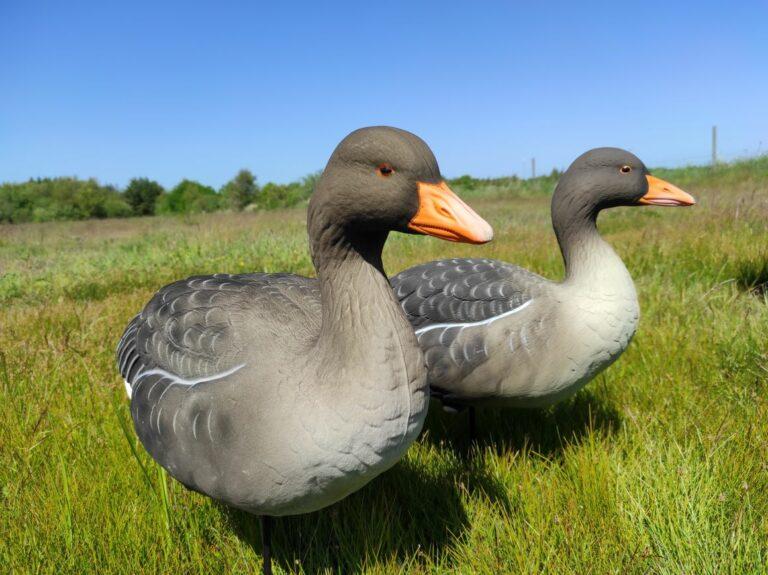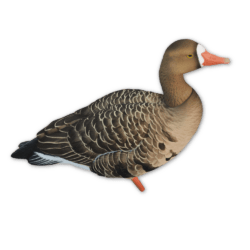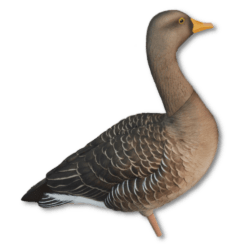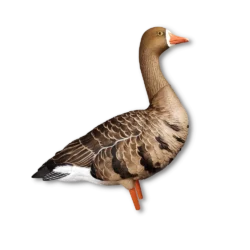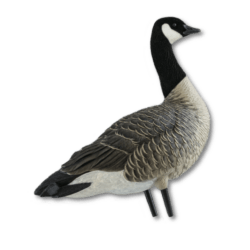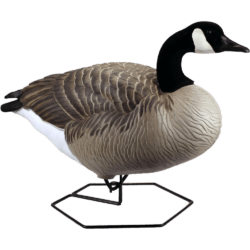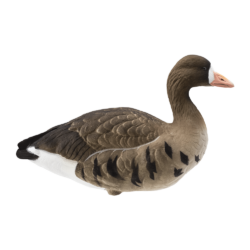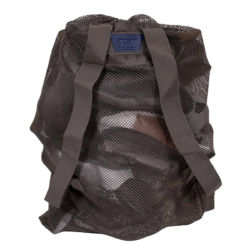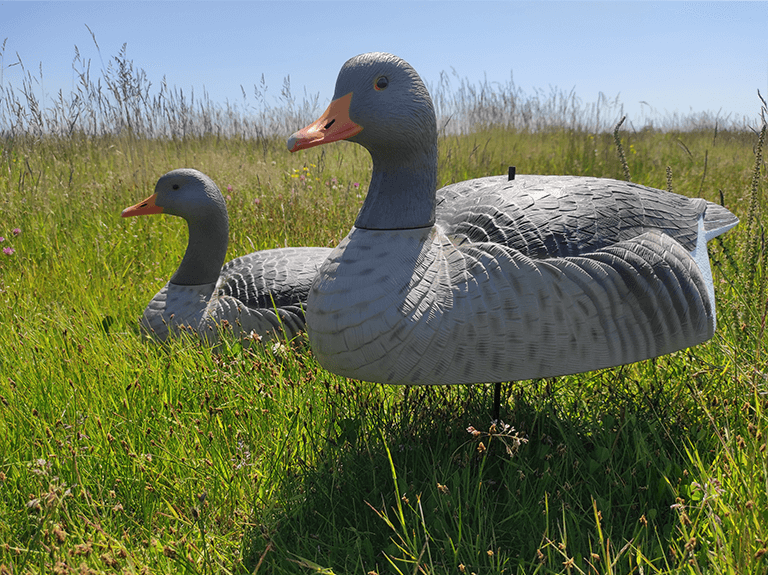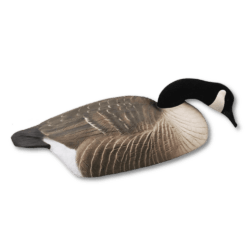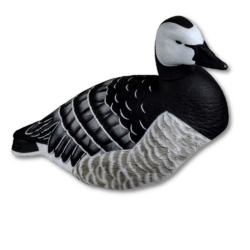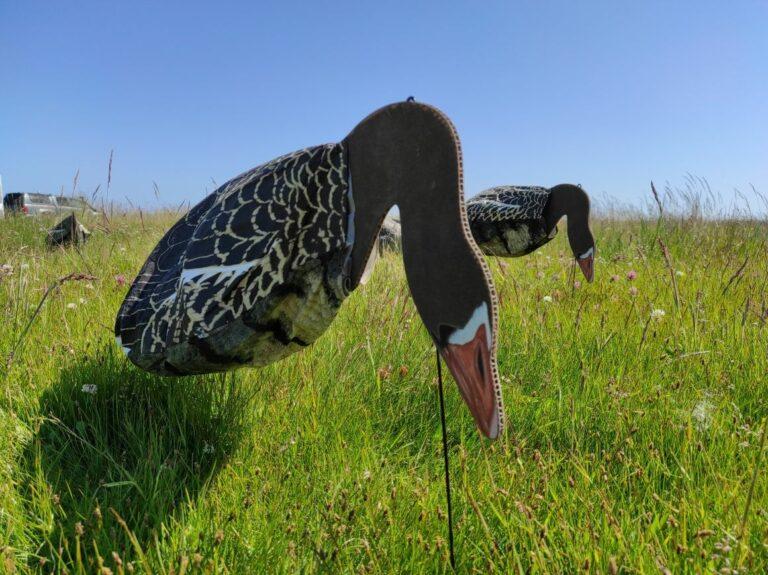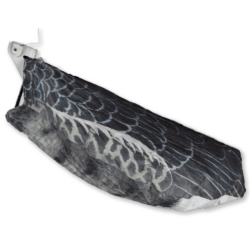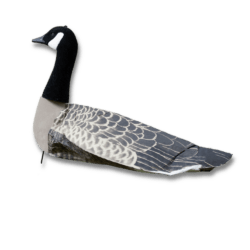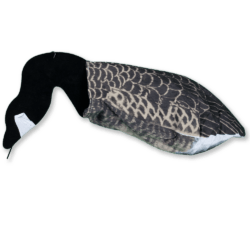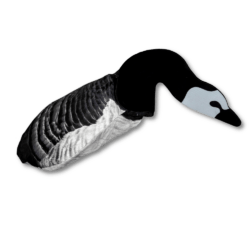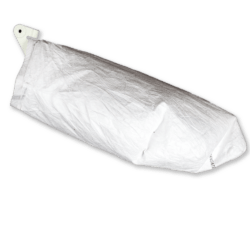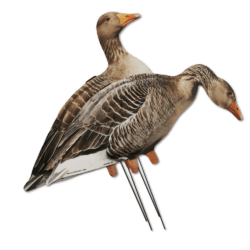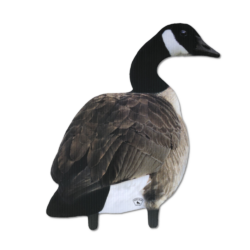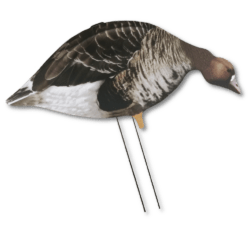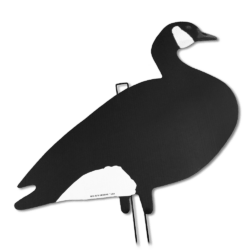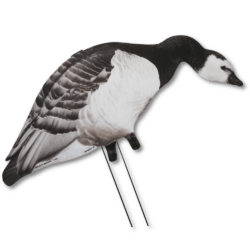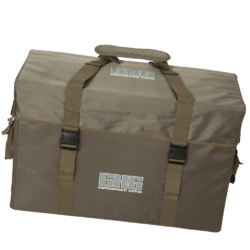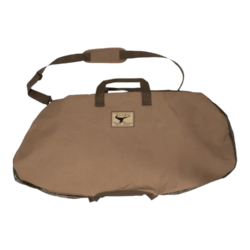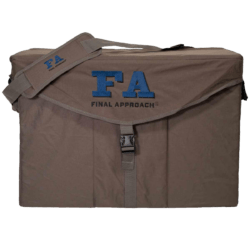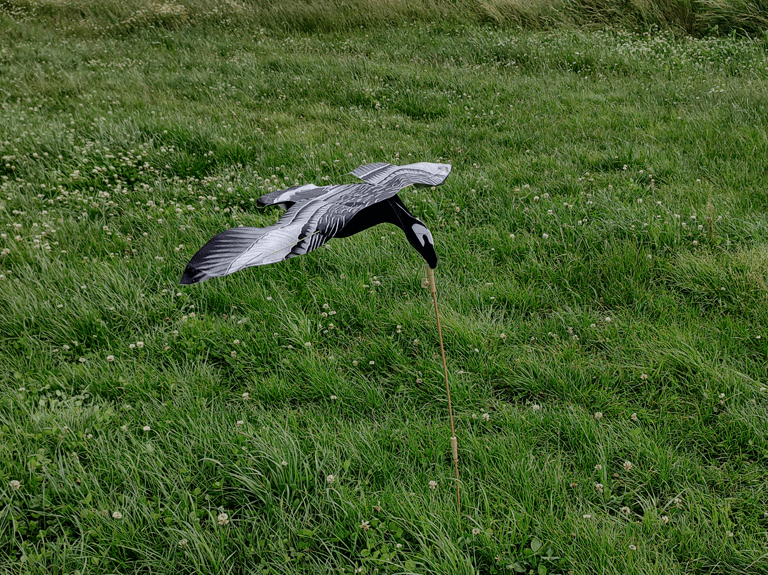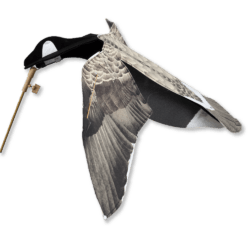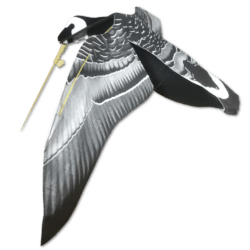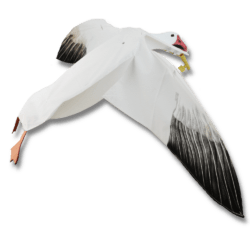Goose decoys from Lucky hunter
At Lucky Hunter, we have a wide range of goose hunting gear. This includes game calls, hunting blinds, and many kinds of goose decoys. With so many decoys to choose from, hunters often ask themselves, ‘What should I choose?”
That’s why we’ve created this blog post, so you can get an overview of the different types of goose decoys, what they can do and how we use them.
Are you more into watching a video? Then click here and go to our series “Goose Hunting – How to get started.
Full body goose decoys
Pros
- Very visible.
- Incredibly lifelike.
- Realistic movement.
Cons
- Difficult to carry.
- Often more expensive than other types.
- Takes up a lot of space.
About Full body shells
Most hunters who practice goose hunting know that the use of decoys is almost a necessity. Full body goose decoys in particular are a “must have” if you really want to be successful with goose hunting.
A full body decoy is, as the name suggests, a decoy made in full figure – So a 3D goose, if you will. Often these geese are incredibly realistic, both in carving, body pose, and paint. In addition, they always come with a mounting stick that they can tilt and move on. These lifelike details and realistic movement make them the most important weapon of any goose hunter, especially when hunting shy goose species, such as greylag geese.
Full Body decoys should be used closest to the “landing zone” you create in your setup. This is where the live geese come closest, and therefore here it is important to have completely lifelike decoys.
Goose shell decoys
Pros
- Stackable and easy to pack.
- Relatively cheap.
- Good for hiding dead birds under.
Cons
- No or minimal movement.
- Lack of realism.
About Goose shells
Goose shells are a bit like Full Body decoys, but they are hollow and lack the belly/underside, to be completely realistic. Many goose shells are also supplied without mounting pins and therefore do not move. In return, goose shells can be stacked on top of each other and are therefore a lot easier to carry out to the hunting area. For that reason, they are often used mixed in with full body decoys, to create more volume in the setup at a lower price
Another little tip is that you can hide the shot geese under your goose shells. Something that can really pay off if the geese are nervous about landing while there are dead geese in your setup.
Windsocks / Sillosocks
Pros
- Adds movement to the setup.
- Easy to pack and transport.
- Visible from far away
- Durable plastic head
Cons
- Not ultra-realistic.
- Not suitable to be used on its own.
About Windsocks/Sillosocks
Windsocks or Sillosocks are a type of decoy best known for adding movement to the decoy setup. The decoys are roughly made like a bag, with a print that looks like a goose. When you are hunting, the bags are filled by the wind, so they move realistically from side to side, and this is the effect we are looking for. Mixed together with other types of goose decoys, it gives the illusion of geese walking around inbetween other geese
The Sillosocks weigh practically nothing, so they are super easy to transport. In return, they are best suited to mix with other decoy geese. Both because they are not ultra-realistic to look at, but also because it is unnatural if the whole flock moves at once.
Silhouette decoys
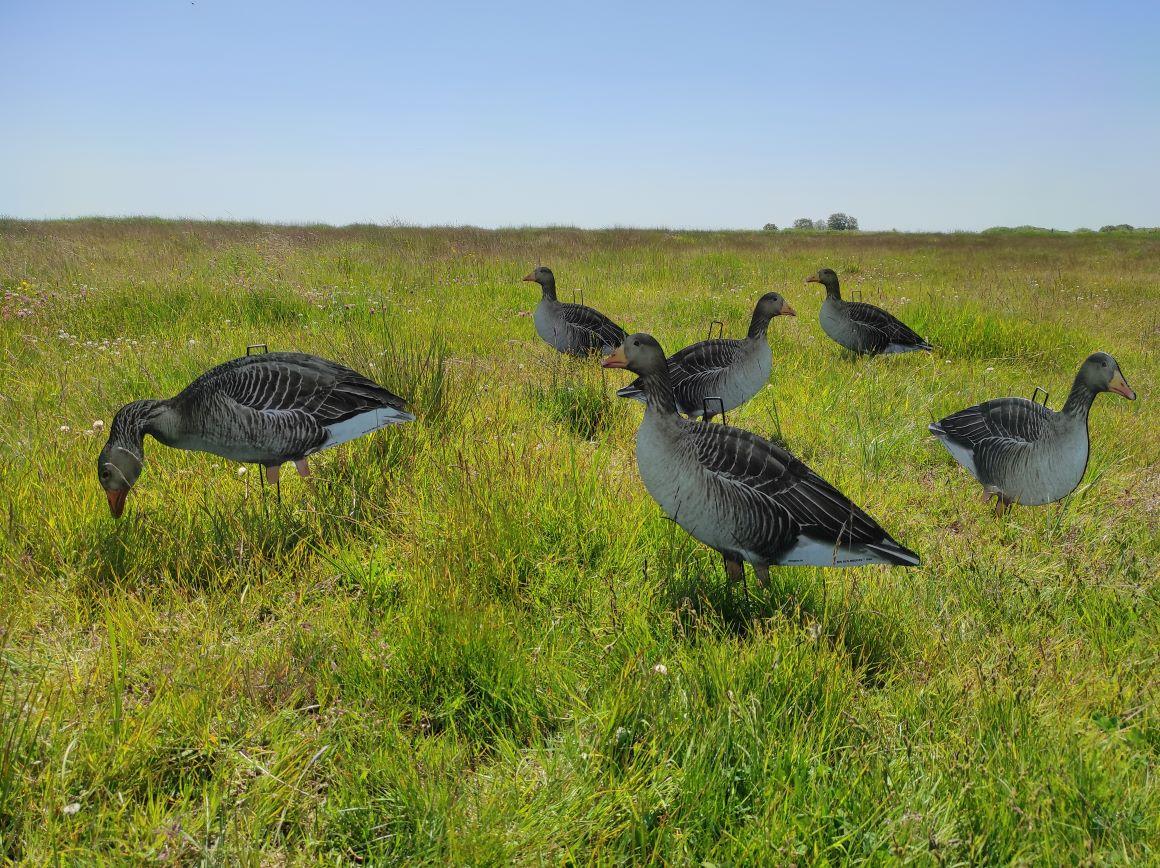
Pros
- Light weight and adds volume
- Easy to pack and transport.
- Life-like print on plastic.
Cons
- Not suitable to be used on its own.
- No movement.
About Silouette decoys
Silhouette goose decoys are essentially “cardboard discs” with a realistic goose print on them, and they are available for all huntable species. This is of course not completely true, as the material is very strong and weather resistant.
The advantage of silhouette decoys is the same as with windsocks – You can recreate a large flock of geese resting and eating without having to carry a lot of weight. The difference is that the silhouettes do not move in the wind, which is why they are good to mix in between your sillosocks so that not all your decoys move. The geese can perceive too much movement as a signal that there is danger on the way and that the flock is about to take off
The silhouette decoys are placed so that they point in different directions. If they all point in the same direction, there will be an angle where they “disappear” when the real geese fly over them. In return, they look like more than you would think when you angle them differently.
Here we use Silhouettes and Sillosocks to a great extent, mixing them into our setup:
Flapper decoys
Pros
- Adds movement to the spread.
- Can be seen from far away.
- Perfect for days with medium wind.
Cons
- Not suitable to be used on its own.
- Often more expensive than other types.
About Flapper decoys
Goose flapper decoys are designed to mimic the motion of a goose flapping its wings as if it is about to land or take off. This movement is a critical visual signal to other geese flying overhead, suggesting that the area is a safe and suitable place to land. By replicating this natural behavior, flapper decoys aim to make a decoy spread more realistic and enticing to geese, encouraging them to join what they perceive as other geese preparing to land or having just landed.
This movement can be particularly effective because geese are social birds and often look for cues from others when choosing a landing spot. The flapping action suggests activity and the presence of geese either settling in or preparing to leave, which can trigger an instinctive response in wild geese to join the group.
Here you can see how the barnacle flappers really add movement to the setup:





